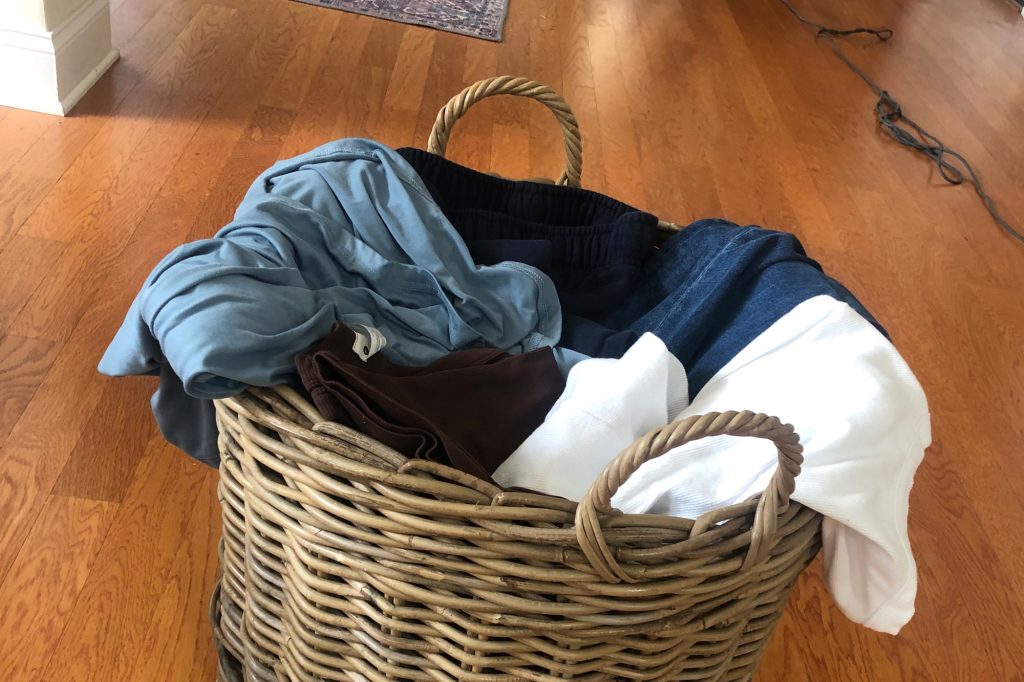
by Beth Dolinar, contributing writer
My water bill will be higher this month. I’m reminded of this as I maneuver around an extra basket on the laundry room floor. It’s overflowing with the clothing my daughter brings every time she visits.
Grace has moved back to Western Pennsylvania after years living in upstate New York; for now she’s living a rather barebones existence in a rental until her husband arrives with the rest of their things. She visits me most days, sleeps over on weekends and always brings the laundry.
Each time I pull the warm bundle from the dryer and fold it, I’m tugged back a bit to her teenage years. Bits of her sixteens and seventeens present themselves as reminders: a pair of ripped jeans, a favorite old T-shirt that’s good and threadbare after hundreds of washes. They are artifacts of that stage, when she was with me every day and was taking the first tentative steps toward becoming the person she is now.
I’m not sure she has really become anything yet, just as I, in my 60s, haven’t yet cemented myself into any final version. We lifelong learners might see ourselves as snowballs rolling down a gradual hill, changing shape and contours as we go; we don’t cross borders into new life stages so much as sort of ooze and slide through the years, dragging bits of our old selves with us as we go, and jettisoning other parts.
But if there is a border that’s more defined than the others, it’s the one between teenager and young adult. Of course there are the emotional, social and physical changes that push a child forward, but for parents it’s the geographical change that’s most evident and the hardest—the moving from “with me” to “no longer with me.”
When my son, my first born, was moving into the toddler years, I found one of his newborn-size socks clinging to one of my sweaters. I was struck by how very small infants are; the little blue sock was the size of a plum. Did his foot really fit into that? The growing up makes you forget how little they were. I’d forgotten.
That’s a dynamic transition, the one that moves a baby from lying down and crawling to standing and walking. That’s an apt metaphor when applied to the teenager-adult transition, too—they stand up and walk away.
Both my children had relatively happy, uncomplicated teenage years; and in them I saw the saplings of what they are now. She is taller and he stronger; both are empathetic and funny. They are animal lovers. I wish they would read books more than they do, but they keep track of what’s happening in the world. They’ve stayed connected with friends from those teenage years.
Any parent knows the loneliness of the empty nester days. For me, that stage went right from their college time to moving out of state—less of a smooth transition and more like hitting a jersey barrier. Here then gone. So much of their growing up happened without my witnessing it. The phone calls withered from daily to twice weekly. Requests for money dwindled and then stopped. I learned not to give advice unless they asked for it. They became snowballs, rolling with almost-adult agency.
***
 About the author: Beth Dolinar is a writer, Emmy-award winning producer, and public speaker. She writes a popular column for the Washington “Observer-Reporter.” She is a contributing producer of documentary length programming for WQED-TV on a wide range of topics. Beth has a son and a daughter. She is an avid yoga devotee, cyclist and reader. Beth says she types like lightning but reads slowly — because she likes a really good sentence.
About the author: Beth Dolinar is a writer, Emmy-award winning producer, and public speaker. She writes a popular column for the Washington “Observer-Reporter.” She is a contributing producer of documentary length programming for WQED-TV on a wide range of topics. Beth has a son and a daughter. She is an avid yoga devotee, cyclist and reader. Beth says she types like lightning but reads slowly — because she likes a really good sentence.

